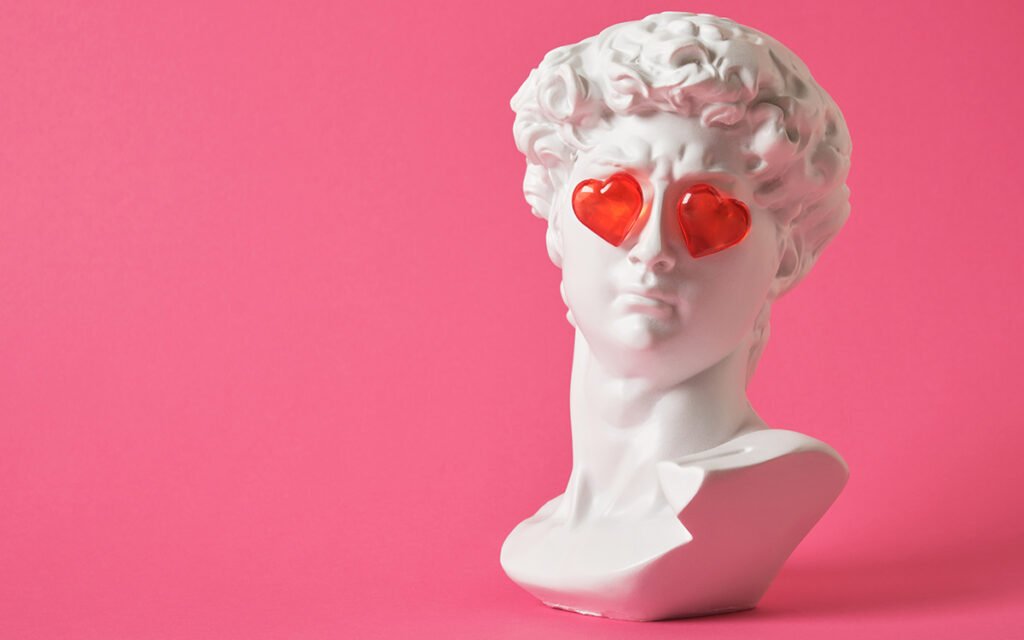Love Is Again Ready To Captivate Our Thoughts, At Least For A Day. And While No One Is Immune To Its Charms, As History Shows Us, Love Is Often Plagued With Disappointments, Social Dogmas, And Expectations.
As Rihanna once sang, we’ve got love on the brain. So, it seems to be the perfect moment to take a journey through the world of famous portraits in search of the most beautiful, moving, tender, sexy, subversive, evocative and influential works on paper about love and romance. It’s no surprise that throughout history, love has been one of the most frequently and most beautifully depicted subjects by painters. After all, what could be more romantic than the act of trying to capture on canvas a feeling that is at once so elusive and so universal? Have a look at our curated list of some of the most influential and evocative
paintings throughout history on the subject of love and romance.
REMBRANDT VAN RIJN – THE JEWISH BRIDE (1662)

REMBRANDT VAN RIJN – THE JEWISH BRIDE (1662)
Love is patient, love is kind: this is the visual embodiment of those great verses from Corinthians, so often read at weddings. Rembrandt’s masterpiece is lovely in its every brushstroke. About his young couple we know very little–who they were, whether she was a bride, whether they were actually Jewish but this image goes beyond portraiture in any case. Their faces are radiant with adoration depicting their gestures are beautiful. His hand gently placed on her breast, and hers tenderly covering it. They are themselves on that day, and yet universal. The painting is a kind of secular altarpiece, an inspiration to patience, humility and love. Hands often play an important role in Rembrandt’s work; gestures are never without meaning, even in Rembrandt’s portraits. He plays the principal role, the girl lightly touching with her left hand on his right, which he has
placed over her heart, an ageless gesture of love. Rembrandt has carefully reproduced the nature of different kinds of material, whether fine and aim transparent, or stiff, falling in broad folds, gathered or pleated.
PETER PAUL RUBENS – THE HONEYSUCKLE BOWER (1609)
PETER PAUL RUBENS – THE HONEYSUCKLE BOWER (1609)
Just back from honeymoon, Rubens sits hand-in-hand with his new young wife, Isabella Brant, among the honeysuckle blossom. She smiles her famously sweet smile; he leans back, and legs crossed and relaxed. Everything in the garden is flourishing; and these two are secure in each other’s love. Where so many 17th-century marriage portraits were rigidly formal,
the historic record of a contract, this one is fluent, conversational and sensuous. The lovers incline together in all respects.
“Honeysuckle Bower” by Peter Paul Rubens is a self-portrait of the Flemish Baroque painter and his first wife. They were married in 1609, in St. Michael’s Abbey, Antwerp, shortly after he had returned to the city after eight years in Italy. Peter Paul Rubens would depict each of his wives within his own work, on some occasions producing celebratory compositions to mark these marital events. The artist would always use an upbeat style with positivity throughout and a respectful depiction of his new wife.
KLIMT – THE KISS (1903)
KLIMT – THE KISS (1903)
In 1903, Klimt travelled twice to Ravenna, where he saw the mosaics of San Vitale, whose Byzantine influence was apparent in the paintings of what would become known as his “Golden Period”. The use of gold harked back to Klimt’s own past, to the metal work of his father and younger brother Ernst, who had both died a decade earlier. Klimt’s interest in the Byzantine period also symbolized a move towards greater stability, through static, inorganic forms; suggesting a search for refuge after
the artist’s exploration of the instinctual powers of archaic Greece. Wrapped in each other, the lovers are enfolded in their everlasting kiss. Their love is out of this world (the only location is this ethereal meadow of rich cloth and jewel-bright paint) and even a little celestial: their heads are haloed in gold leaf. Bare feet, flowers in their hair: no wonder hippies loved Klimt’s masterpiece and it remains the most famous kiss in painting. A perfect square of canvas, a perfect fit of a couple: it is just what young lovers often feel, dovetailed together in their kiss as the world dissolves into a shimmer around them.
RENOIR – DANCE IN THE COUNTRY (1883)
RENOIR – DANCE IN THE COUNTRY (1883)
Dance in the Country is also known as The Country Dance and La danse à la champagne. Renoir ?s contentment in his family life during this time was obvious in his art and, becoming more bourgeois, his Dance pictures honoured this typical middle-class activity. Dance in the Country was the only canvas in which Renoir painted the female – in this case his future wife, Aline
Charigot-enjoying herself and showing a full smile. His mistrust of knowledgeable women was renowned and so, it could be
that he did not feel threatened by Aline, as she was a seamstress and a working-class girl and thus decided to paint her with a
full smile. In his first sketch of Dance in the Country there is very little detail and the woman ?s identity was unknown. Yet, in the final painting Renoir depicts a very happy woman with a mouth curving upwards in a definite smile. Renoir’s biographers claim that he worked best when surrounded by women, as he could listen to them sing while working. It appears that his paintings and yearning for the company of women were suggestive of his general attitude towards the opposite sex and for him, women could serve as muses. Renoir’s lovers are swept away by music, dance and summer’s heat–and by each other. The whole painting seems to sway. And the crowning glory of this beautifully soft and sultry composition, with the hint of feather beds to come, is the smile.
